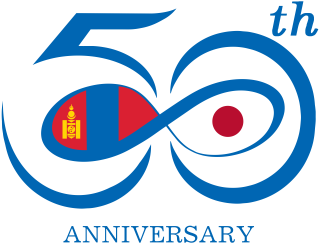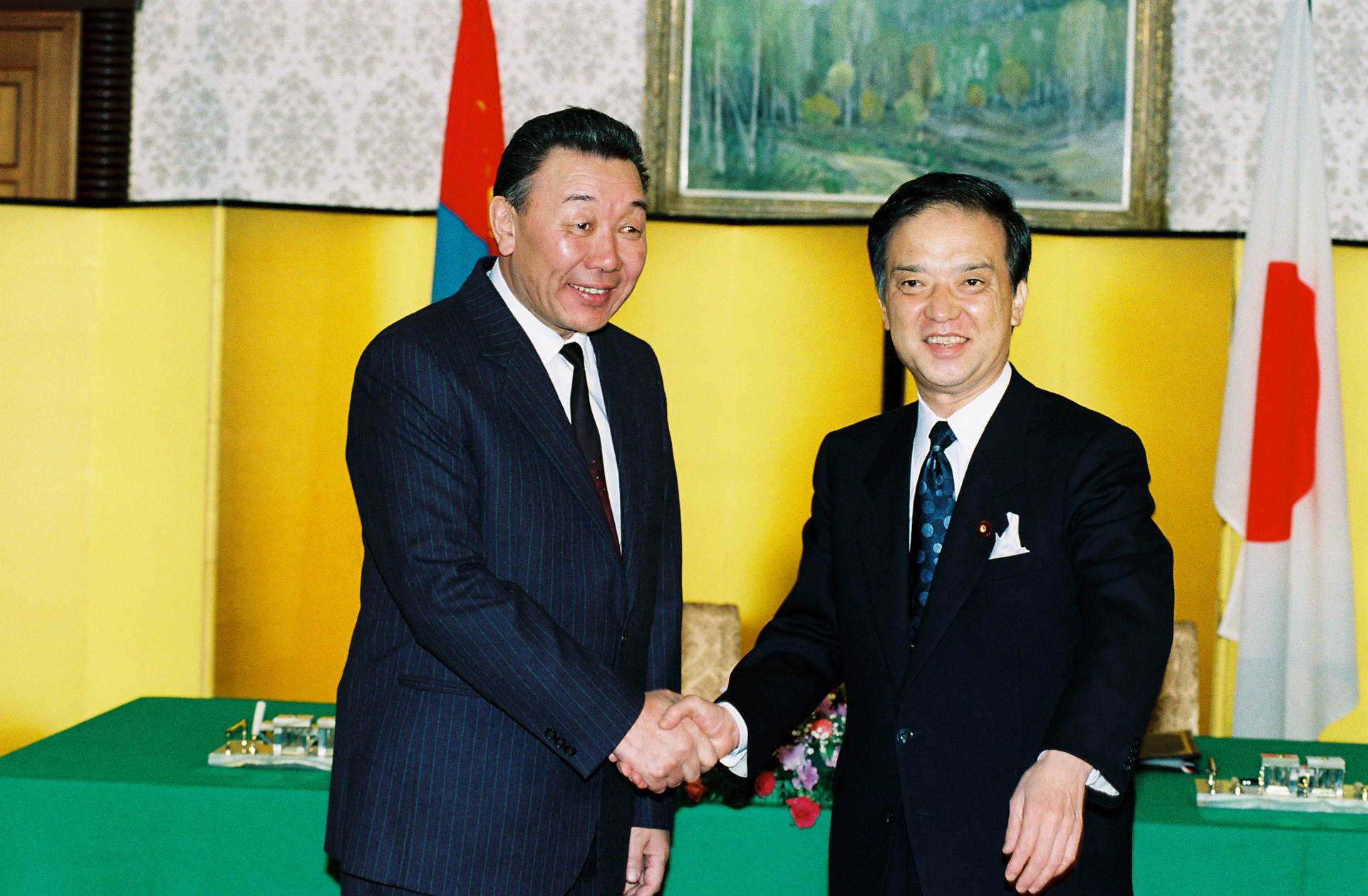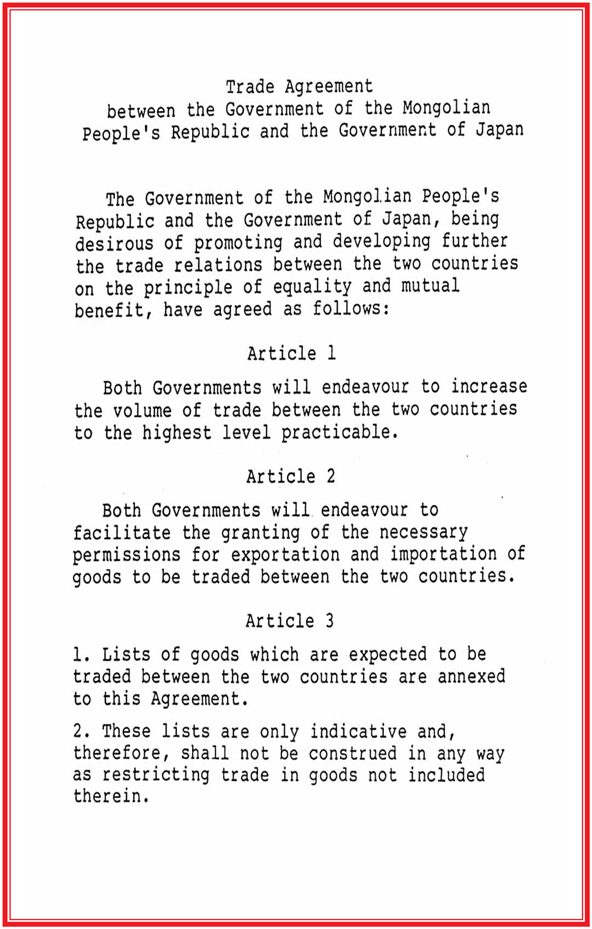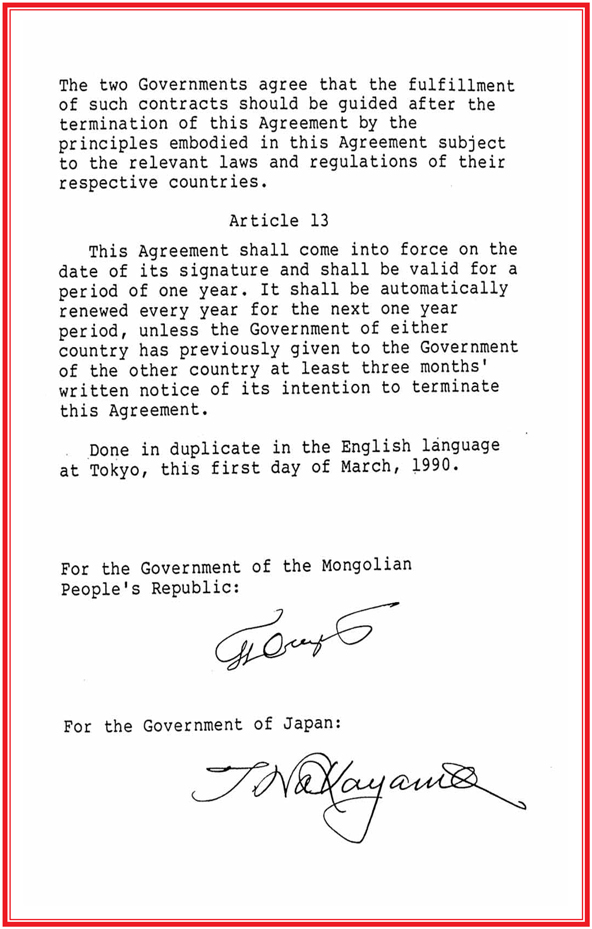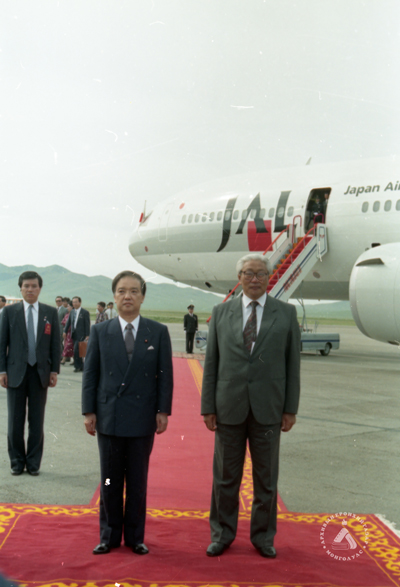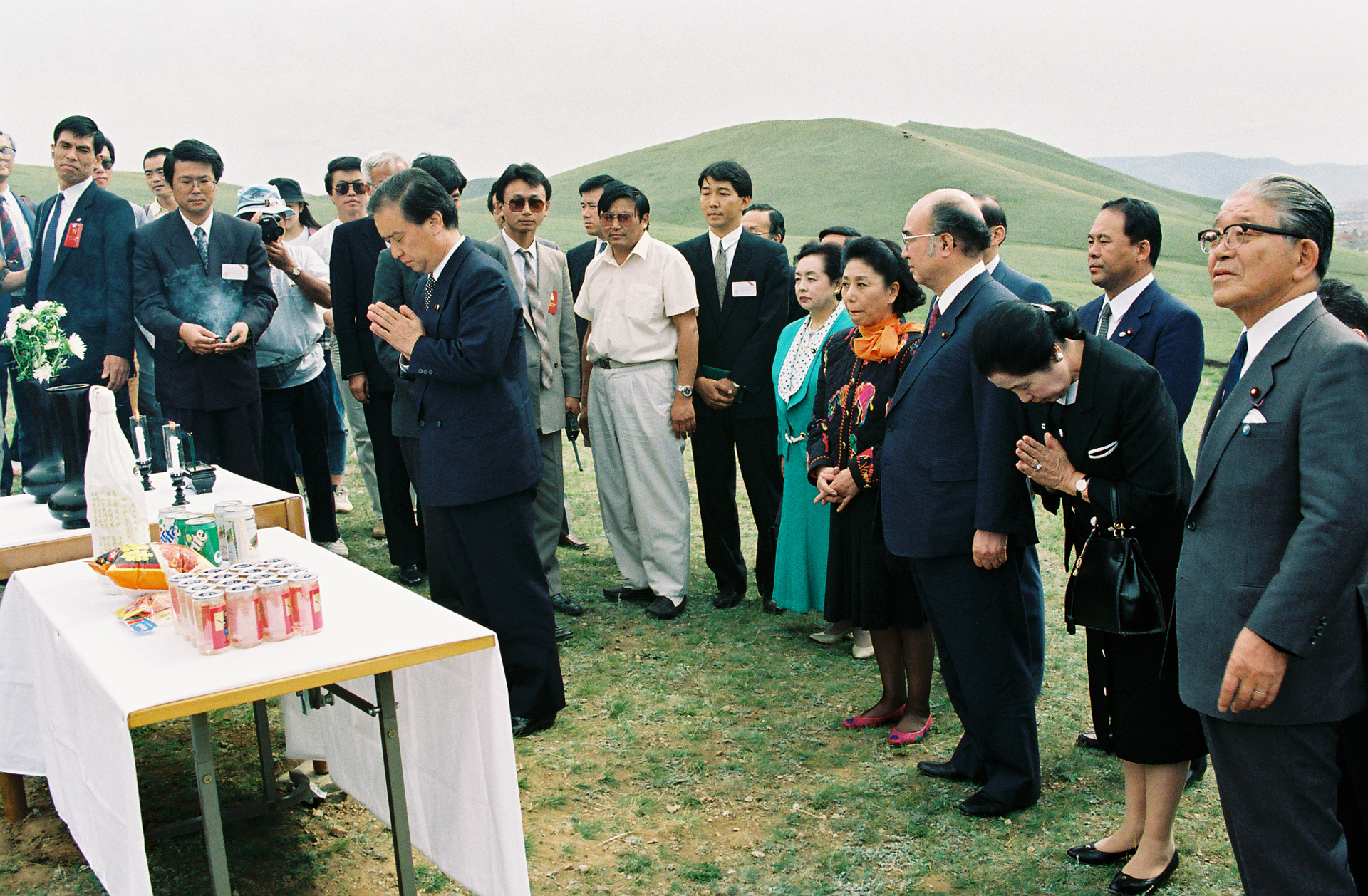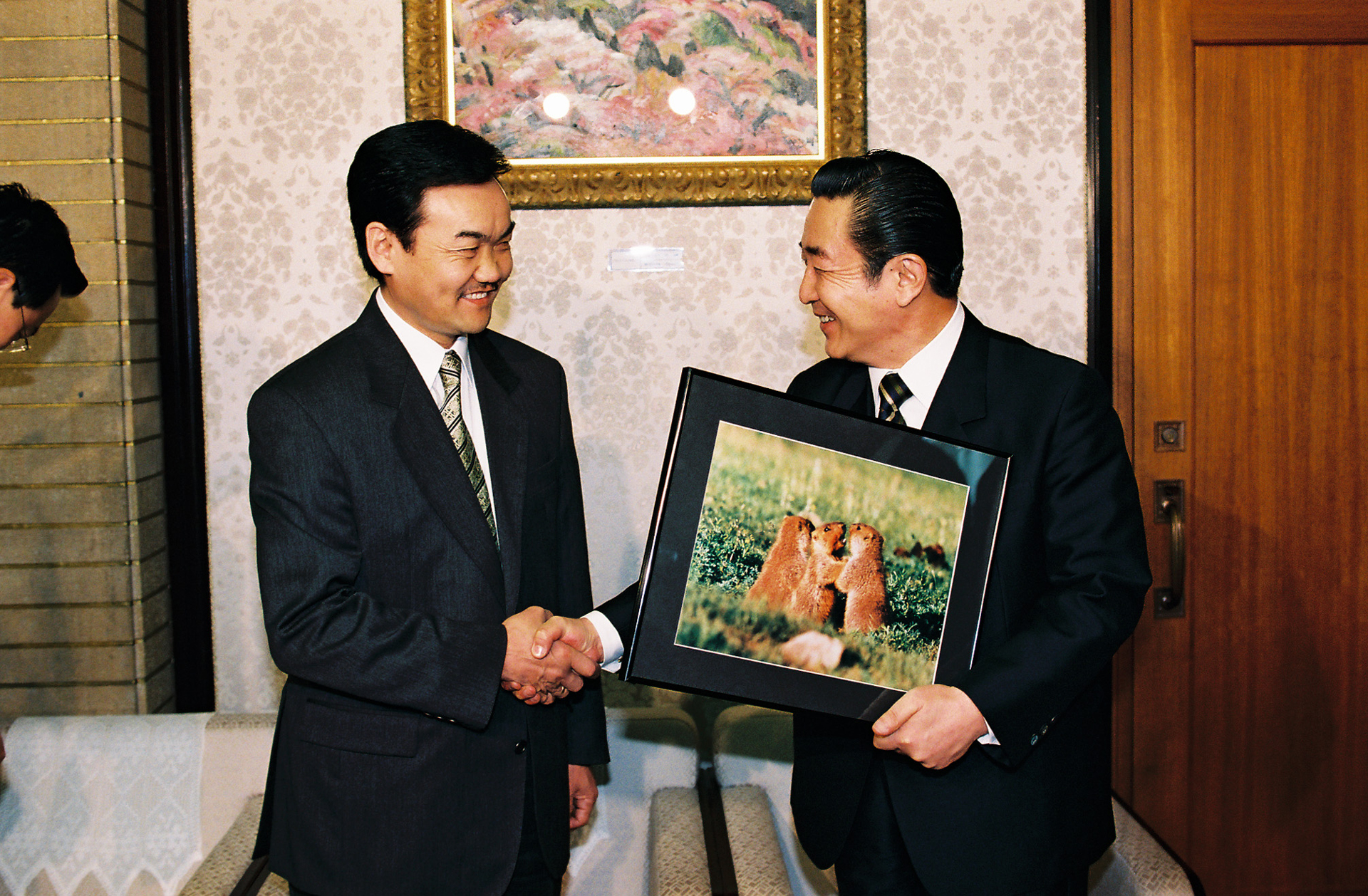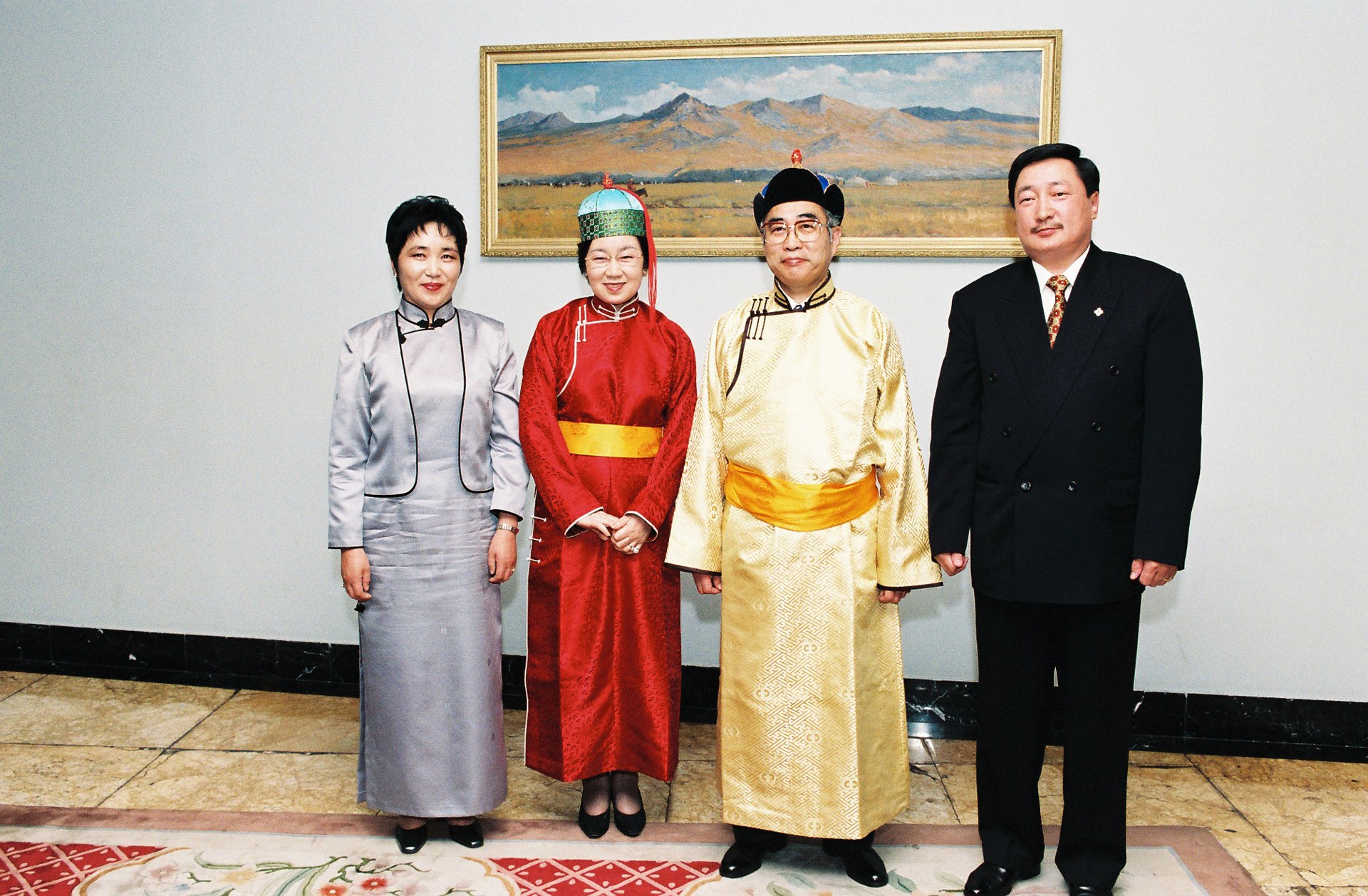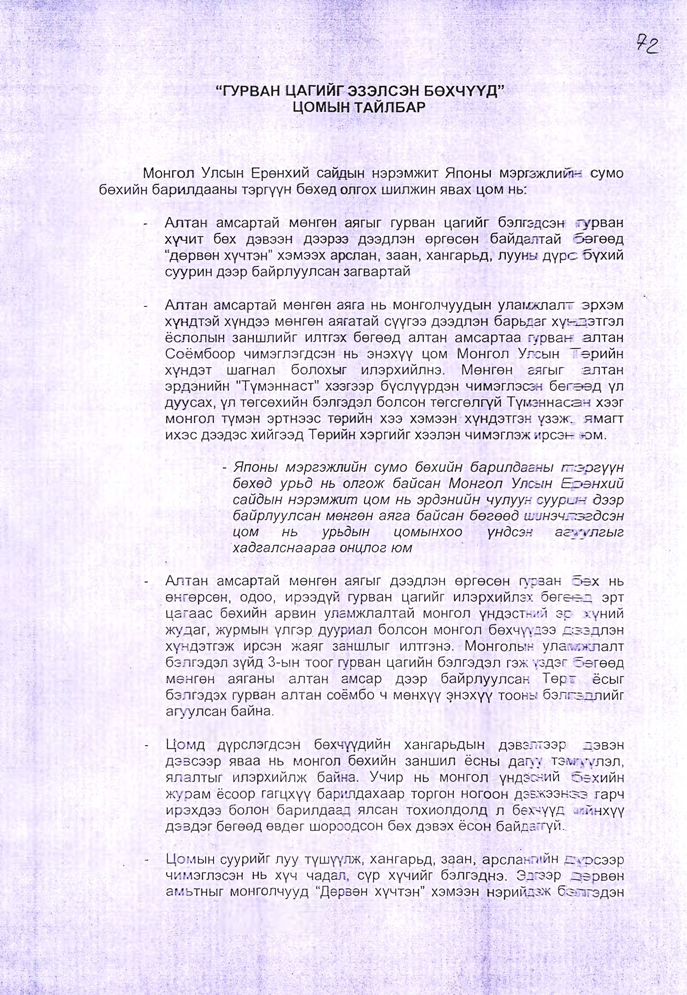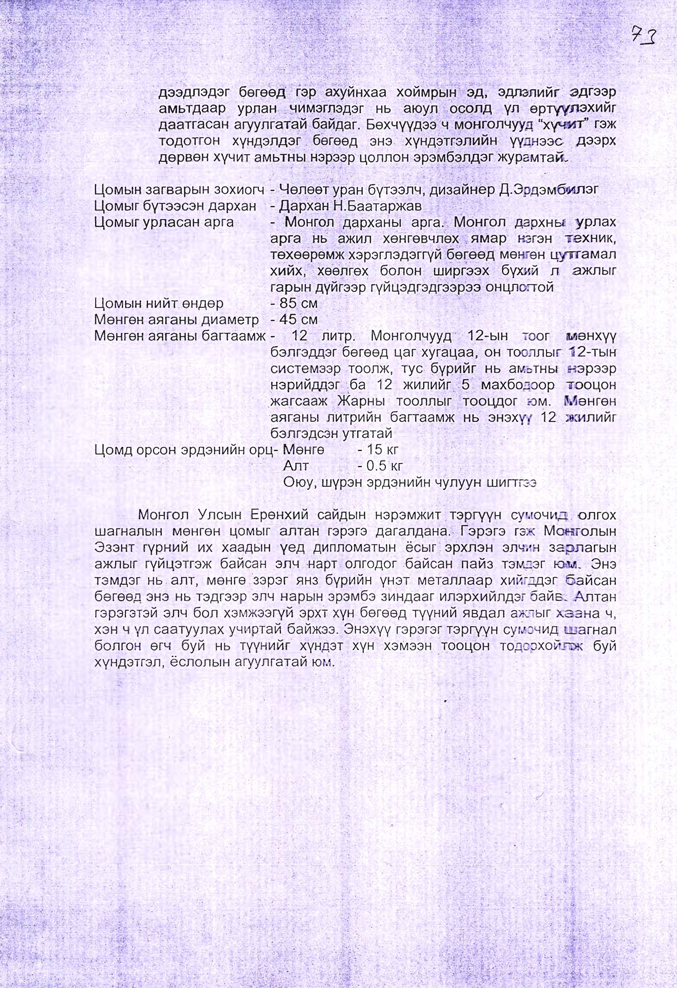ⅥRelations between Japan and Mongolia at the end of the 20th century through the 21st century
With the end of the Cold War and the new international situation brought about by the collapse of socialist regimes around the world, Mongolia turned the corner toward democracy in 1990. The new constitution was adopted on January 13, 1992, and went into effect on February 12, 1992, providing for a change in the country’s name and emblem from the People’s Republic of Mongolia to Mongolia, and for the revision of the parliamentary system. Japan continued to play a central role in supporting Mongolia by providing economic assistance and calling for a series of international donor conferences named the Mongolia Assistance Group Meeting (later renamed the Mongolia Consultative Group Meeting). On the one hand, Mongolia aimed to expand democratization, make a full-fledged transition to a market economy, and strengthen relations with Western countries, including Japan. On the other hand, Japan intended to develop diplomacy from an Asian and global perspective by enhancing its international role. The bilateral relations between Japan and Mongolia have developed dramatically.
In the wake of the 9.0-magnitude Great East Japan Earthquake in 2011, Mongolia provided prompt human and material assistances to Japan. The close relationship between these two countries continues to this day.
Top-Level Exchanges
 Visit to Japan by Mongolian Prime Minister Dumaagiin Sodnom
Visit to Japan by Mongolian Prime Minister Dumaagiin Sodnom
Following the visit to Japan by Foreign Minister M. Dugersuren in 1987 and the visit to Mongolia by Foreign Minister UNO Sosuke in 1989, Prime Minister D. Sodnom came to Japan in February 1990. Prime Minister Sodnom, the first Mongolian Prime Minister to visit Japan, stated that "Japan is our third neighbor." Both countries agreed to conclude a trade agreement, and that Japan would provide medical equipment through ODA as well as cultural grants.
The photo introduced here depicts Prime Ministers Kaifu (right) and Sodnom (left) shaking hands at the beginning of the summit meeting held on March 1st. This photo is a part of the Special Collection of Successive Prime Ministers.
 Trade Agreement
Trade Agreement
This is an agreement signed on March 20, 1990, in Tokyo.
The purpose of this agreement was directed that both governments would endeavor to increase the volume of trade between the two countries to the highest level practicable, and to facilitate the granting of the necessary permissions for exportation and importation of goods.
List of goods which are expected to be traded between the two countries are annexed to this Agreement.
 Visit to Mongolia by Japanese Prime Minister KAIFU Toshiki 1
Visit to Mongolia by Japanese Prime Minister KAIFU Toshiki 1
Prime Minister KAIFU Toshiki's visit to Mongolia in August 1991 was the first visit not only by a Japanese government head but also by a Western government head. During his visit, Prime Minister Kaifu announced Japan's policy to support Mongolian democratization, including the Japan Overseas Cooperation Volunteers (JOCV) and the dispatch of experts to various economic sectors.
This policy was aimed at establishing Japanese and international mechanisms to support Mongolian reforms, and it has resulted in bilateral assistance provided by Japan's ODA since 1990, as well as international donor conferences held in Tokyo and Mongolia in cooperation with the World Bank.
This item shows Japanese Prime Minister Kaifu being welcomed by Mongolian Prime Minister D. Byambasüren at the Buyant-Ukhaa airport.
 Visit to Mongolia by Japanese Prime Minister KAIFU Toshiki 2
Visit to Mongolia by Japanese Prime Minister KAIFU Toshiki 2
This item shows the visit of Japanese Prime Minister Kaifu to the Japanese Cemetery on the outskirts of the city, together with his companions including Foreign Minister NAKAYAMA Taro.
 Visit to Japan by President Natsagiin Bagabandi
Visit to Japan by President Natsagiin Bagabandi
President N. Bagabandi’s visit to Japan in 1998 was his first official visit to Japan as a head of state (excluding accession ceremonies and stopovers).
At the summit meeting, following the visit of Prime Minister M. Enkhsaikhan in 1997, the two leaders agreed to develop bilateral relations based on the principle of "Comprehensive Partnership."
This is a photo of Prime Minister HASHIMOTO Ryutaro and President N. Bagabandi shaking hands at the beginning of the summit meeting held on May 13, 1998.
 Visit to Mongolia by Prime Minister OBUCHI Keizo
Visit to Mongolia by Prime Minister OBUCHI Keizo
Prime Minister Obuchi was the first Japanese Prime Minister to visit Mongolia in eight years, since Prime Minister Kaifu’s visit in 1991. In his speech in Ulaanbaatar, Prime Minister Obuchi expressed his gratitude for the 3,000 blankets sent from Mongolia at the time of the Great Hanshin-Awaji Earthquake in 1995. He and his wife were also invited to the opening ceremony of the national Summer Festival (Naadam), which was held for three days from July 11, the anniversary of the Mongolian Revolution.
This is a photo of Prime Minister Obuchi and his wife in Mongolian traditional costume, between Prime Minister Janlavyn Narantsatsralt and his wife on July 10, 1999.
Grand Sumo Tournament
 Mongolian Prime Minister's Cup
Mongolian Prime Minister's Cup
In 2003.
This is a description on the Mongolian Prime Minister's Cup, which is presented to the winning wrestler of the Japanese Grand Sumo Tournament. It explains that this cup is awarded to "wrestlers by their strength and wisdom."

